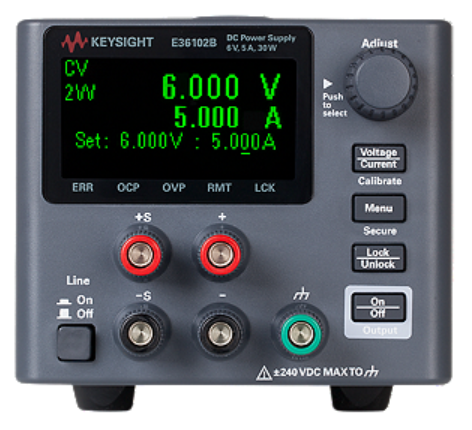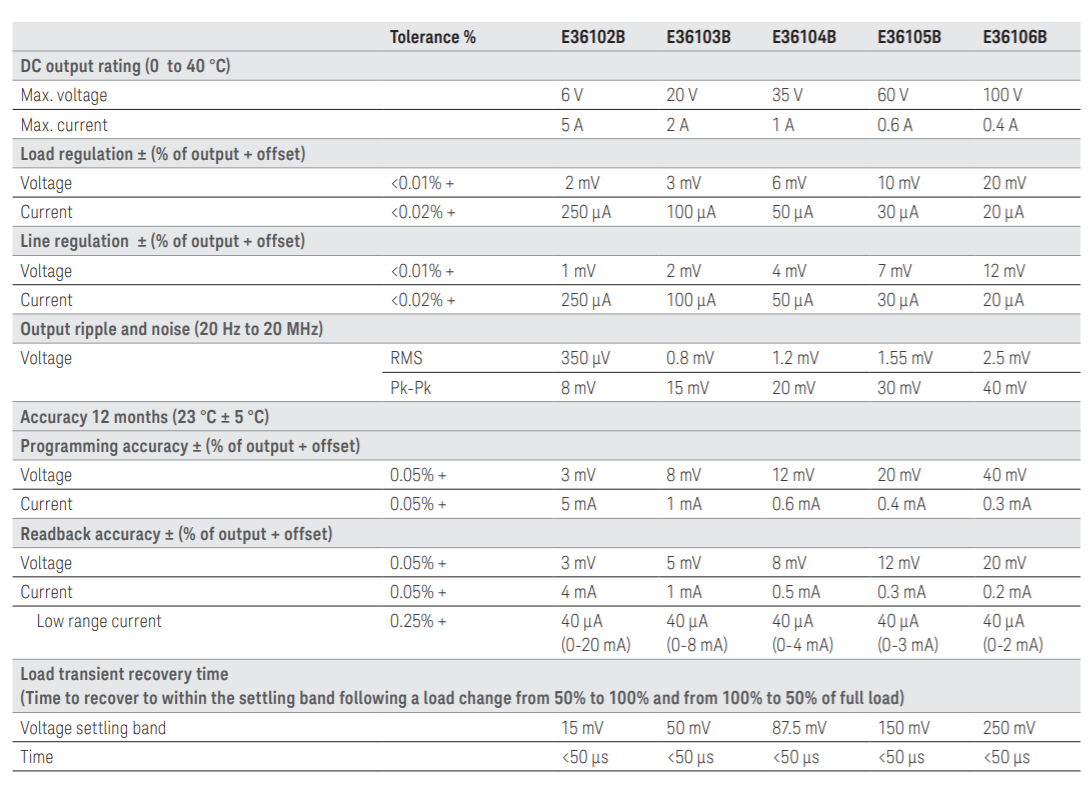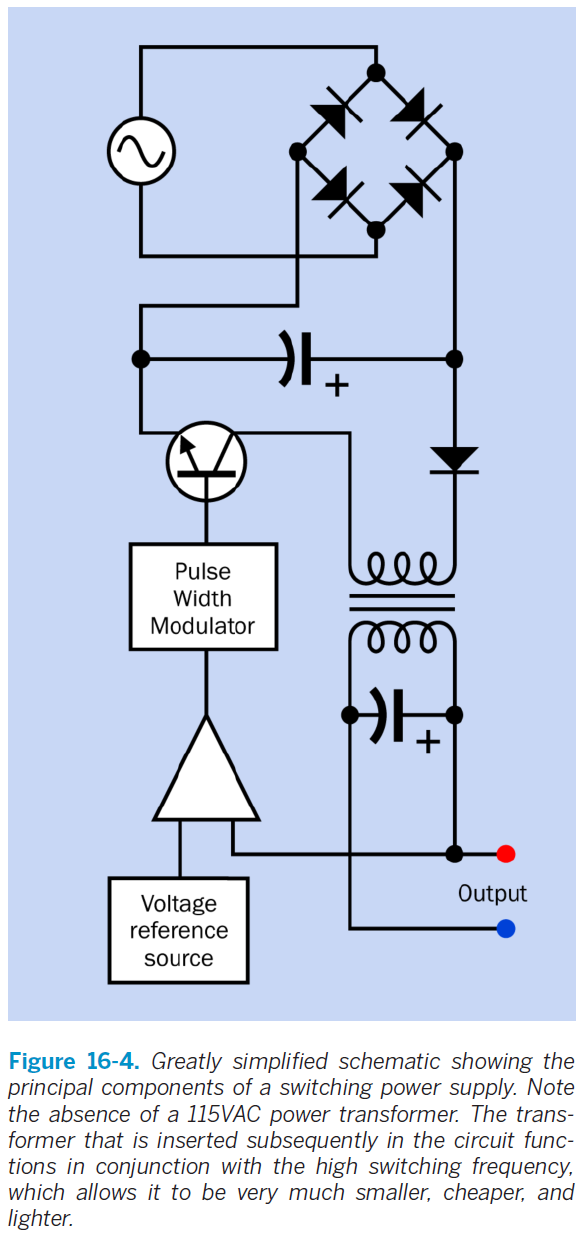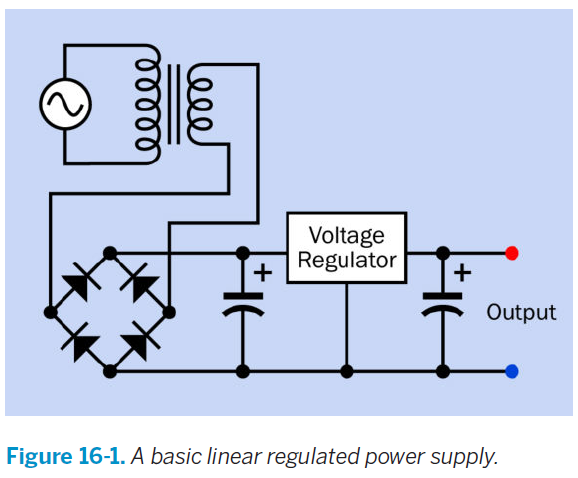Equipment
Bench power supply
Linear vs. switching output regulation
Switching
- Converts the AC line power directly into a DC voltage without a transformer.
- The raw DC voltage is converted into a higher frequency AC signal, which is used in the regulator circuit to produce the desired voltage and current.
- Considerably more efficient than 60 Hz transformers, so the power conversion ratio is higher.
- As much as 80% smaller and lighter than a corresponding linear power supply, but it generates high-frequency noise that can interfere with sensitive electronic equipment.
- Best suited for portable equipment, since it is lighter and more compact.
Linear
- Applies the AC line voltage to a power transformer to raise or lower the voltage before being applied to the regulator circuitry.
- Since the size of the transformer is indirectly proportional to the frequency of operation, this results in a larger, heavier power supply.
- Requires larger semiconductor devices to regulate the output voltage and therefore generates more heat, resulting in lower energy efficiency.
- Because the electrical noise is lower and easier to contain, a linear power supply is better suited for powering sensitive analog circuity.
Models
Keysight E36100 Series

- Type: Linear (achieves its small size by using an efficient toroid transformer), single output.
- I/O interfaces: LAN (LXI Core) and USB 2.0 FS (TMC4800)
- Dimensions (HxWxD):
- Overall: 2U, 1/4 rack (
102x106x365 mm.)
- Net (without feet, strap handle
and binding posts): 2U, 1/4 rack (
89x106x339 mm.)
Variants
- E36102B:
6 V, 5 A, 30 W
- E36103B:
20 V, 2 A, 40 W
- E36104B:
35 V, 1 A, 35 W
- E36105B:
60 V, 0.6 A, 36 W
- E36106B:
100 V, 0.4 A, 40 W




